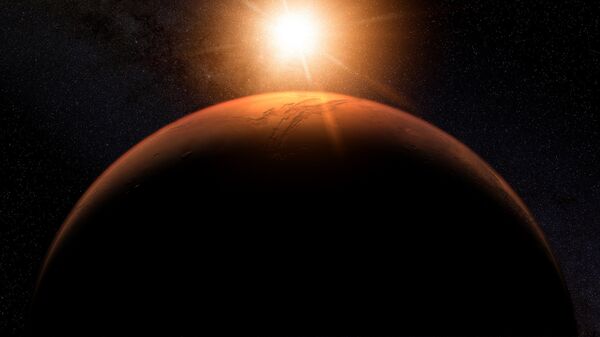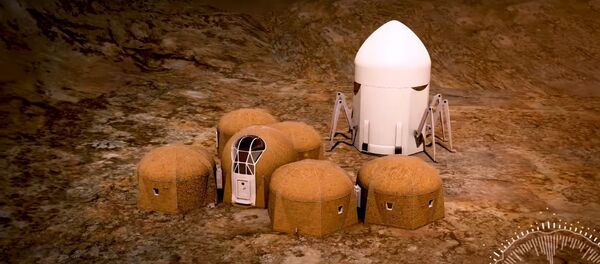Alexander Smoleevsky, an employee of the Russian Academy of Sciences’ Institute of Biomedical Problems who in 2011 took part in a simulated manned flight to Mars called MARS-500, told Sputnik about the kinds of dangers intrepid space explorers set for the Red Planet would have to contend with.
First Peril: Cancer Threat
During the lengthy spaceflight, the crew would have to contend with space radiation, which wouldn’t be completely absorbed by the craft’s hull.
According to Smoleevsky, the issue of radiation during a flight to Mars has been studied, and scientists have estimated that an acceptable dose of radiation a cosmonaut can endure without any health risk is 1,000 millisieverts.
"A cosmonaut would be subjected to about 1 millisievert per day, so 520 millisieverts in total is not life-threatening. However, there’s also the associated risk of oncological diseases. Western scientists claim that the maximum radiation dose is 660 millisieverts, so we are still within acceptable parameters," he said.
The scientist also remarked that existing technologies could further insulate spacecrafts and thus limit the crew’s exposure to radiation by an additional 30 percent.
Second Peril: Gravity Issues
The nearly complete absence of gravity during spaceflight may weaken a cosmonaut’s muscles, including their heart. Also, staying in space for prolonged periods of time has a detrimental effect on a person’s bone tissues.
As Smoleevsky explained, the lack of gravity indeed poses a serious threat to cosmonauts, so his colleagues at the Institute of Biomedical Problems have already spent quite some time developing effective countermeasures, including a special training regimen, special suits and a short-radius centrifuge.
"After undergoing this training regimen, a person would feel fine even following a landing after a lengthy spaceflight," he said.
Third Peril: Hygiene
During the long trip to Mars in a spacecraft’s cramped quarters, there would be few opportunities to change one’s underwear, and virtually no chance of taking a shower or washing your clothes.
As Smoleevsky explained, the researchers tested various antibacterial materials in order to extend the time this underwear could be worn.
Ablutions can be carried out by using special moisturized tissues soaked in a special compound which can effectively remove dirt, sweat and grease. The researchers also developed a special shampoo called “Aelita,” which requires very little water to wash one’s hair.
"However, an ordinary person who normally takes shower two times a day, singing and relaxing in the process, won’t feel themselves very comfortable in these conditions,” Smoleevsky observed.
Fourth Peril: Threat of Degradation
The space explorers’ tribulations wouldn’t be over once they land on Mars’s surface, as they would still be affected by ionizing radiation coupled with the planet’s harsh climate and low gravity.
"Due to all these factors, even by equipping a protective suit, a person would be able to spend limited time outside of their Martian outpost which would most likely be built below the planet’s surface in order to minimize heat loss and radiation exposure," Smoleevsky said.
He also noted that fatigue, stress, desynchronosis of bodily rhythms and Mars’s ionizing radiation could also degrade the astronauts’ cognitive functions.
According to Smoleevsky, a manned mission to Mars will be possible sometime after 2030, even by the most optimistic estimates, with space tourism on the Red Planet an even more distant prospect.



